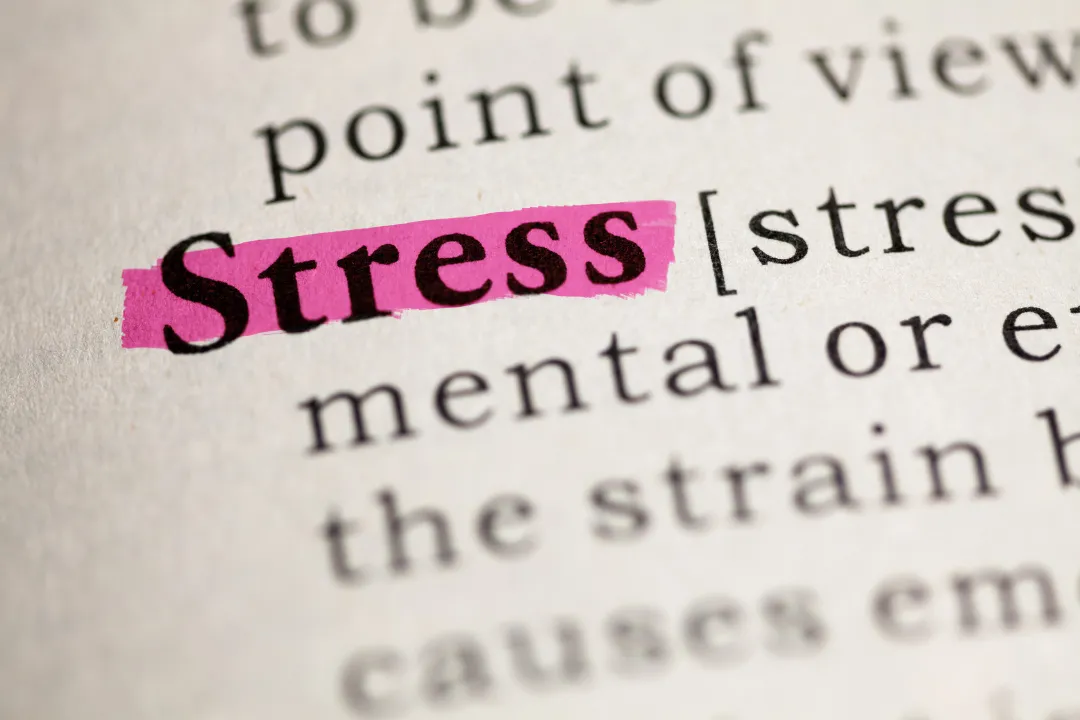
How to Self-Soothe: Tips to Relieve and Manage Stress
I feel my heart start to beat faster and harder. Sweat accumulates on my hands and feet, and I can’t help but squirm around in my seat, unable to sit still. I wonder if anyone notices me freaking out, as I try not to think about how nervous I am about everything going wrong…
If you’ve ever experienced a similar feeling, you’re not alone. Many of us face moments where our nervous system spikes, leaving us focused on the worst outcomes imaginable. Though stress is not inherently bad, the dysregulation of our stress can leave us feeling depleted, panicky, and imbalanced when we don’t need to be.
What is Stress and How Does it Affect Your Body?
Stress is the natural human response of mental tension to address challenges or threats caused by a difficult situation [1]. Our perspective, however, dictates how we use our stress response.
Let’s first briefly review the stress response. When you experience a stressful event, an area of your brain called the amygdala will first process the information and send a distress signal to the hypothalamus. The hypothalamus will then activate the branch of your autonomic (involuntary) nervous system that is responsible for your “fight-or-flight” response - the sympathetic nervous system. The primary stress hormone cortisol as well as epinephrine are activated through this pathway, and many physiological changes follow, including a faster heart rate, increase in blood pressure, dilation of the airways in the lungs allowing more oxygen in with each breath, a sharpening of the senses, etc. [2].
It’s useful to remember that stress is an evolutionary mechanism that has helped us survive as a species for thousands of years. It is supposed to help us, not harm us, especially when facing a negative or dangerous situation. However, when we’re unable to regulate stress properly or we have an adverse relationship with it is when it becomes a problem in our lives.
The Negative Impact of Stress Dysregulation
When our sympathetic nervous system is activated in response to a threat to our safety, many physiological changes occur. Once we have identified that the threat is no longer, our body returns to baseline. This is the natural cycle of stress regulation [3].
Unfortunately, this is not the case for many of us. In modern life, our bodies are often exposed to stressors that aren't life-threatening, yet they trigger the same intense stress responses. Examples of false threats are angry emails from your boss, comparing oneself to others’ social media posts, seeing an ex-friend in public, thinking about a traumatic event, etc. I call these false threats because even if these events may be unfavorable, it’s really our perspective of these events as stressful that causes them to be unregulated in our bodies and minds.
In our fast-paced, complex world, we haven’t been taught how to regulate our stress response, and in consequence, we’ve compensated by remaining vigilant to any possible threat (real or not) at all times.
As stress expends large amounts of our energy, its overuse can leave us feeling fatigued, unmotivated, and restless as our bodies fight to keep us alive. Over time, if our bodies are continually depleted and unrestored, this can lead to vulnerabilities in our system, making us more susceptible to infections, digestive issues, emotional instability/panic attacks, disease, and chronic illness/pain.
Chronic stress can also make us less tolerant and less resilient to daily challenges as our ability to make effective, level-headed decisions diminishes.
In summary:
An imbalanced mind leads to an imbalanced body. An imbalanced body leads to an imbalanced mind.
How to Relieve Stress: Proven Techniques for Self-Soothing
Tool #1: Breathe into the Present Moment
Many of the ailments we deal with are stress-related. Having a personalized toolbox of calming techniques can help facilitate our own healing.
The first tool I recommend is to BREATHE. As simple as it sounds, deep breathing can activate our parasympathetic nervous system (the other branch of the autonomic nervous system) and bring us back to baseline.
By focusing on your breath, you shift your attention from anxious thoughts to the physical sensation of breathing, which helps anchor you in the present moment.
This practice helps:
Reduce racing thoughts
Calm a pounding heart
Slow down overactive worry
From this state of present-moment awareness, we can then remind ourselves that worry can not and will not solve our problems.
Why Breathing Works to Reduce Worry
Worry is a manifestation of insecurity. We worry because we feel out of control - we do not trust ourselves to handle difficult or new experiences. However, worry only provides a false sense of control; Rarely do events play out just as we imagined them to.
When we tune into our bodies, we can shift our focus from “controlling” to “doing”, focusing on what we can do NOW to help ourselves, others, or the situation we are in. This mindset shift allows us to use stress productively, without letting it overwhelm us.
Rather than worrying about what we can’t do or what hasn’t yet occurred, let’s switch the narrative toward what we can do in the present.
Why not change our narrative into something empowering rather than fearful?
Ready to try? Cour offers 30+ guided meditations to help you practice deep breathing and cultivate mindfulness.

Tool #2: Shifting our Perspective into Surrender and Resilience
Once we learn how to manage stress, the next step is shifting our mindset. How do we shift our perspective into positivity, surrender, and trust and maintain it?
The Power of Surrender
Like I said before, because we are not in control of the outcomes in our lives, there is invaluable peace in surrendering what we think is our individual control over our own situations.
Further, when I say surrender, I do not mean that we give up and lose responsibility or direction for our lives. Rather, we take empowered, detached action that is aligned with our values and capabilities without doubting ourselves.
As humans, we are given the free will to make decisions, responsible for our own responses and actions. But, ultimately, the fruits of our actions are out of our control. This is such a huge relief because we no longer have to concern ourselves with the future, only with trying our best in the present. What’s better yet is that when we start living and acting in alignment with our authentic self, we will start to see our life unfolding in an affirming way.
The Universe wants to work with you and see you flourish - we’re on this Earth to LIVE and LOVE, not fear.
All we have to do is let go.

Resilience: The Key to Emotional Strength
I know that a lot of us feel like life and people around us have failed us and continue to fail us. And maybe that’s true.
Life on Earth is a struggle and it is full of suffering. But I believe that if you clicked on this blog today, you haven’t given up hope. You are resilient and you want to know how you can use your stress response to your benefit.
Though we can’t control others’ actions and reactions to us, remaining truthful and loving with ourselves is a superpower no one can take away. Learning how to navigate difficult situations with the correct stress response only builds us up. These are the keys to maintaining a resilient and positive life.
There will always be situations and people that disappoint us. But, it is our perspective and action that follows that determines how we let that circumstance affect us.
Not to mention that there will always be people and experiences that remind us of the innate beauty and purity of this precious life.
Practicing switching from fear into surrender, worry into resilience, and guarding and regulating our stress response will inevitably help us remain calm amongst the storm, no matter what outcome.
Through this shift of body, mind, and consciousness, I promise that you can get through anything with grace and ease.
Ready to Build Your Stress-Relief Toolbox?
If you’re ready to learn how to surrender, build your resilience, and regulate stress, check out Cour’s tools on Bilateral tapping, EFT tapping, and meditation!
References:
[1]: https://www.who.int/news-room/questions-and-answers/item/stress
[2]: https://www.health.harvard.edu/staying-healthy/understanding-the-stress-response






